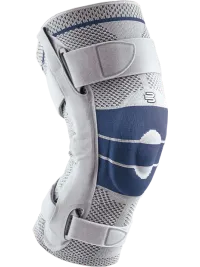
The elbow is a remarkable joint that allows for the intricate movements of the arm, facilitating activities ranging from lifting objects to throwing a baseball. Despite its importance in daily life, the elbow is often overshadowed by other joints like the knee or shoulder. In this article, we'll uncover six lesser-known yet key facts about the elbow, shedding light on its complexity and significance in maintaining upper limb function and mobility.
FACT #1: The Elbow Joint Is Composed of Three Bones:
While most people are aware of the humerus bone in the upper arm and the ulna and radius bones in the forearm, they may not realize that these three bones come together to form the elbow joint. The humerus meets the ulna and radius at the elbow, creating a hinge-like structure that allows for both flexion and extension, but also forearm rotation movements. This unique arrangement provides the elbow with stability while enabling a wide range of motions.
FACT #2: The Elbow Joint Is Supported by Ligaments and Muscles:
In addition to the bones, the elbow joint relies on ligaments and muscles for stability and function. Ligaments, such as the ulnar collateral ligament (UCL) on the inside of the elbow and radial collateral ligament (RCL) on the outside, help to reinforce the joint and prevent excessive movement in sideways directions. Muscles like the biceps and triceps play essential roles in elbow motion, but also act as secondary stabilizers to strengthen elbow stability.
FACT #3: The Olecranon Process Forms the Bony Prominence of the Elbow:
The bony prominence at the back of the elbow is known as the olecranon process. This structure is part of the ulna bone and serves as an attachment point for several muscles and ligaments, including the triceps tendon. When the ulna extends, the olecranon process moves along with it, providing leverage for the triceps muscle to extend the elbow.
FACT #4: Cubital Tunnel Syndrome Can Cause Elbow Pain and Numbness:
While carpal tunnel syndrome is well-known, cubital tunnel syndrome is a lesser-known but equally significant condition involving compression of the ulnar nerve at the elbow.
Do you ever remember hitting the "funny bone" on the inside or your elbow? It turns out that the funny bone is not actually a bone at all, but rather the ulnar nerve as it passes through the inside of the elbow.
Cubital tunnel syndrome occurs when the ulnar nerve, which passes through a tunnel on the inside of the elbow (the cubital tunnel), becomes compressed, stretch or irritated. This can result in symptoms such as elbow pain, tingling, numbness, and weakness in the hand and fingers, particularly the ring and small fingers. Common causes of cubital tunnel syndrome include prolonged bending of the elbow, repetitive movements, and direct pressure on the nerve. Treatment options may include splinting, activity modification, anti-inflammatory medications, and in severe cases, surgery to release the pressure on the nerve.
FACT #5: Golfer's Elbow and Tennis Elbow Are Common Overuse Injuries:
Golfer's elbow (medial epicondylitis) and tennis elbow (lateral epicondylitis) are common overuse injuries that affect the tendons around the elbow. Despite their names, these conditions can occur in individuals who don't play golf or tennis. Golfer's elbow involves inflammation of the tendons on the inside of the elbow, while tennis elbow affects the tendons on the outside of the elbow. These injuries typically result from repetitive gripping, lifting, or twisting motions of the wrist and forearm. Treatment may include rest, ice therapy, physical therapy, corticosteroid injections, and in some cases, surgery to manage the damaged tendons.
FACT#6: Elbow Injuries Can Occur With Both Low and High Energy Mechanisms:
Low energy mechanisms include such things as same level falls, sudden movements, improper lifting. These low energy mechanisms can result in strains and sprains, but also can result in broken bones or torn tendons. Examples of higher energy mechanisms include falls from height, car accidents, and bike accidents. The higher force of these mechanisms can lead to more severe broken bones, dislocations, or elbow instability. Proper initial evaluation and treatment by a trained upper extremity specialist is key to achieving a good outcome with any of the above elbow injuries.
Conclusion:
The elbow is a complex joint that plays a vital role in facilitating upper limb function and mobility. By familiarizing ourselves with these lesser-known facts about the elbow, we can better appreciate its complexity and importance in daily activities. Whether it's practicing proper ergonomics, seeking timely treatment for injuries, or implementing preventive measures, prioritizing elbow health is essential for overall well-being and quality of life. Here at OrthoSouth and the OrthoSouth Hand Center, we have five fellowship-trained Hand and Upper Extremity Specialists along with a team of Certified Hand Therapists to ensure that all elbow ailments will be properly and timely treated to achieve the best possible outcome.

Peter Henning, MD is a is a board-certified, fellowship-trained orthopedic hand and upper extremity surgeon seeing patients in OrthoSouth's Memphis-Briarcrest, Germantown, Arlington, and Southaven offices.

